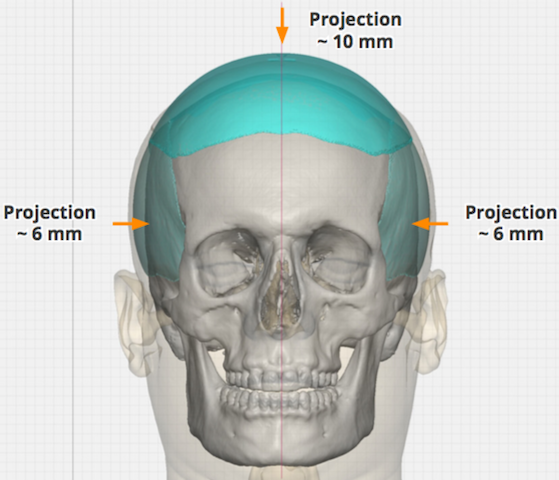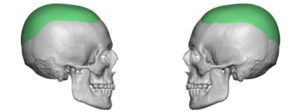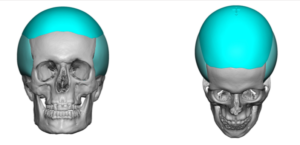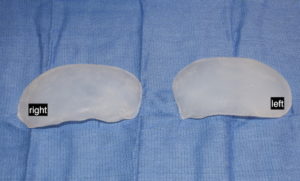Background: Enlarging the size of the head must take into consideration multiple issues. The first is what zones of the head need to be augmented. (top, back, front and sides) The second is how much augmentation can be done in a single surgery given the stretch of the scalp to permit it. And thirdly, if the augmentation involves much of the head’s surface area, should it be one large implant or several implants to do so.
On the first issue, it is rare that just one skull area by itself ever needs to be augmented. Almost always to get a smooth and confluent head shape that does not look out of proportion, it is necessary to cover more surface area than one initially thinks. Also a not insignificant number of patients after a first skull implant decide later they want more augmentation or to cover more skull surface areas.
On the second issue, I have learned that it is hard in most people to get skull implant volumes greater than 150ccs. Such an amount has become my maximum volume limit in a first surgery even with scalps that have a fair amount of flexibility. Any volume amounts larger than 150ccs will require a first stage scalp expansion…or a staged implant type of expansion.
On the third issue in near total head augmentation the debate is whether one implant in the same tissue plane or multiple implants in different tissue planes is better. To a large degree this is determined by the length of the scar on the top of the head that can be tolerated.
The following case study illustrates all three of these head enlargement issues.
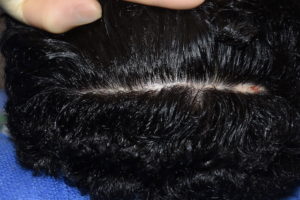
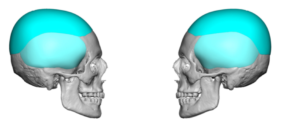

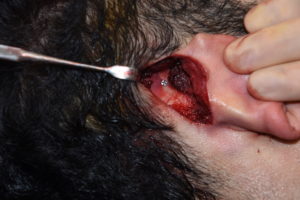
When scar limitations exist (a coronal type scalp incision can no be used) overall head enlargement implants can be placed through three smaller incisions with three separate implants in different tissue planes.
Case Highlights:
1) A second custom skull implant can usually double the volume of the initial implant.
2) As the height of the skull implant increases the width of the sides of the head to maintain proportion must be considered.
3) Custom temporal implants can be placed in a submuscular location from incisions behind the ears.
Dr. Barry Eppley
Indianapolis, Indiana

